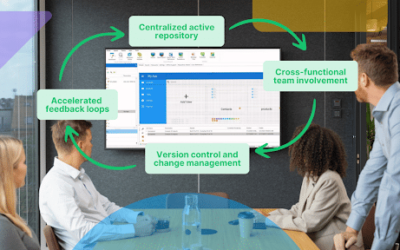No-code/Low-code platforms have rekindled the idea that “amateur” programmers, also known as citizen developers, can increase efficiency and effectiveness throughout the entire business. A citizen developer is a non-IT professional who is capable of solving business problems by creating applications in low-code development environments. For example, Bob from accounting has an idea to make his job easier, so he fires up a low-code software platform and develops an application to solve his problem. Pretty cool right? Well, yes and no.
Good Low-Code
The promise of citizen developers helping IT reduce backlogs and make the business more efficient has circulated through online communities and IT conferences for years. What’s different about the conversation today is that the number of citizen development tools available has sky-rocketed. This means that there are finally solutions to some of today’s biggest issues in the industry, such as huge IT backlogs and slow application development due to a lack of talented professional programmers.
Suddenly, employees from every department can create solutions to their own problems. Business applications can be created in record time as IT no longer needs to program every application. Most likely these citizen developers are using a model based low-code platform which is designed to make application creation quick and easy through a drag and drop integrated development environment (IDE). These model based low-code solutions definitely increase application production and are perfect for small intradepartmental work flows and small data reporting. If an application is not mission critical and is not a key component of the business process, then citizen developers and model based low-code platforms can be useful. However, if the scope of the applications being created involves sensitive data and mission critical applications, then citizen developers are not the answer.
Better Low-Code
In reality, not every employee can be a citizen developer. There is still a high level of understanding and comprehension which goes into learning how to create applications using model based low-code platform. As quick and amazing as some low-code vendors make their products sound, an average employee will not be able to create their first real business application in under a week. They will still need to burden IT with help creating it and deploying it. Knowing that citizen developers won’t be able to create complex applications, some low-code platforms cater to both citizen developers and professional programmers.
As a result of having to accommodate the inexperienced citizen developer, some model based low-code platforms restrict professional developers by not providing the tools necessary to program efficiently and effectively. Model based low-code platforms struggle with complex integrations and become highly inefficient when a solution is needed which can’t be completed inside the platform’s IDE. An experienced professional programmer will have to drop out of the low-code’s IDE to find a solution through traditional coding practices. Once the traditional code is finished, the developer then needs to create an interface to link his traditional code to the low-code application. The model based low-code promise of quick application creation drops exponentially as complexity increases. Model based low-code platforms are not designed for rapid development of complex mission critical applications, but I will tell you what is.
Learn why securing an IBM mobile application is so important and how it could drastically affect your organization’s IBM i application modernization.
Best Low-Code
A language-based, low-code approach focuses on giving professional developers the tools they need to quickly, efficiently, and effectively create high quality mission critical applications. Whether an entire application framework is needed or just a single mobile application, LANSA has the best low-code approach to ensure programming professionals are given the necessary tools to expedite the creation of enterprise applications.
To further accelerate application development, LANSA doesn’t make the programmer leave the development environment at all. Even complex integrations and processes can be handled inside of LANSA’s IDE. LANSA’s single language approach to low-code allows programmers to focus on solving problems instead of creating work arounds. What’s even better is one language covers both the client-side and server-side coding so a programmer will never have to use or learn another programming language.
LANSA’s low-code platform is truly designed to give professional developers the tools they need to efficiently create high quality business applications in a fraction of the time as traditional coding with less restrictions and maintenance than a model based low-code solution. Don’t take my word for it, hear it from our customers!
Learn more about the IBM facts and features and how LANSA can help transform your existing application into modernized apps, as well as the costs of utilizing an IBM Developer Portal and how modernization affects the working lives of developers.

























